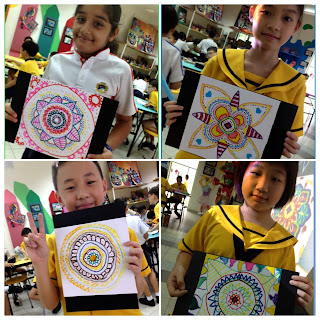Rangoli also known as Kolam is a folk art from India. Rangoli are decorative designs made on the floors of living rooms and courtyards during Hindu festivals. They are meant to be sacred welcoming areas for the Hindu deities.The ancient symbols have been passed on through the ages, from each generation to the next, thus keeping both the art form and the tradition alive. The patterns are typically created with materials, including colored rice, dry flour,(colored) sand or even flower petals.
Rangoli were not just a medium of decoration but it reduces negative energy and add positivity to places where it made. The purpose of Rangoli is decoration, and it is thought to bring good luck. It is traditionally done by women, but over the years modern additions have been adapted. Generally, this practice is showcased during occasions such as festivals, auspicious observances, celebrations of marriages and other similar milestones and gatherings.
Rangoli designs can be simple geometric shapes, deity impressions, flower and petal shapes (appropriate for the given celebrations), but they can also become very elaborate designs crafted by numerous people. The base material is usually dry or wet granulated rice or dry flour, to which Sindoor (vermilion), Haldi (turmeric) and other natural colors can be added. Chemical colors are a modern variation. Other materials include colored sand and even flowers and petals, as in the case of Flower Rangolis.
(Retrieved from http://en.wikipedia.org/wiki/Rangoli)
Lesson 1
The pupils were first introduced to the history and origin of Rangoli designs (refer to the text above). After also showing examples of rangoli designs, the pupils had a good idea of what was expected.



They were each given a square piece of cartridge paper and colour markers. They were then tasked to create their own Rangoli design using simple geometric shapes, flowers and colours. As the pupils were also taught Symmetry during their Math lessons, this lesson was a good opportunity for them to apply what they learnt and see a link between Art and Math.
(Retrieved from http://en.wikipedia.org/wiki/File:Asymmetric_(PSF).svg)
Final Products! :)

























